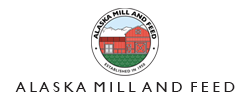Nutrition for Inactive Dogs | Alaska Mill & Feed
Posted by Kimberly McCourtney on Dec 4th 2020
Dogs that don't get much exercise don't need as many calories as dogs that do. You should pay attention to your dog's energy level, potential reasons your dog's energy level might change and things you can do to keep your less active dog fit.
Inactive dogs are more likely to put on extra pounds since they don't burn as many calories. This puts them at risk for obesity, which carries with it a greater risk for a variety of health ailments.
What Is an Inactive Dog?
There is no precise definition for an inactive dog, but you probably can tell
if your dog fits this category. Inactive dogs don't get much exercise and often
don't seem to have much interest in exercise - dogs that prefer to sleep, don't
run when they go outside or tend to move as little as possible most likely fit
this category.
Why Is a Dog Inactive?
Dogs might be inactive for a variety of reasons:
- Age: As dogs grow older, their energy level tends to drop.
- Illness or Injury: Physical ailments can make it harder to move as much. These might be temporary slowdowns, but adjustments should still be made.
- Overweight: Dogs that are overweight may tend to be less active. This can create a dangerous spiral. The more overweight, the less active, and the less active, the more overweight.
Feeding an Inactive Dog
If you have an inactive dog, you should try to feed the right amount of
calories for your dog's activity level. If your dog is in ideal body condition
and isn't gaining weight, you're feeding the right amount. But if your dog has
become less active while his feeding has remained the same and he's getting
overweight, try these tips:
- First, cut back on treats and snacks. These are generally high in calories and may contribute to weight gain.
- The second step can be to feed less of the animal's regular pet food. Measure the amount of food that's put into the pet's dish to prevent the serving size from increasing over time.
- Third, owners can increase a pet's exercise with additional walks or playtime each day. This helps the pet owner as well as the pet, and has the additional benefit of increasing the amount of time the pet and owner spend together.
- Finally, a pet owner could consider switching to a reduced-calorie food. These products are designed to allow an owner to serve a nice-size portion while still reducing the calories the animal eats.
It is always a good idea to consult with a veterinarian before changing a pet's diet. The veterinarian can help tailor program for an individual pet and can track progress and help troubleshoot along the way.

